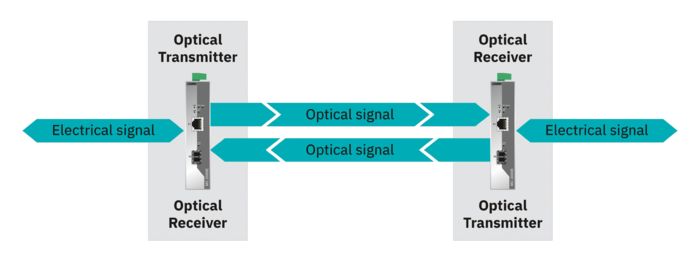
Insertion and coupling losses can occur when the light is fed into the fiber by the transmitter or also through plug and splice connection along the route and at the receiver. Many things can cause these types of losses. One frequent cause is contamination on connector faces.
Coupling different core diameters in one link also leads to losses. Splice connections created with fusion splicing are very low-attenuation, with values below 0.1 dB. Longitudinal, transverse, and angled fiber end offsets can also lead to attenuation. Scratches and cracks on face surfaces not only increase attenuation, but can also damage the coupled face surface on the opposite side. Assembly errors such as a notch from the outside on fiberglass during assembly can also lead to attenuation or even breakage at a later point in time.

























